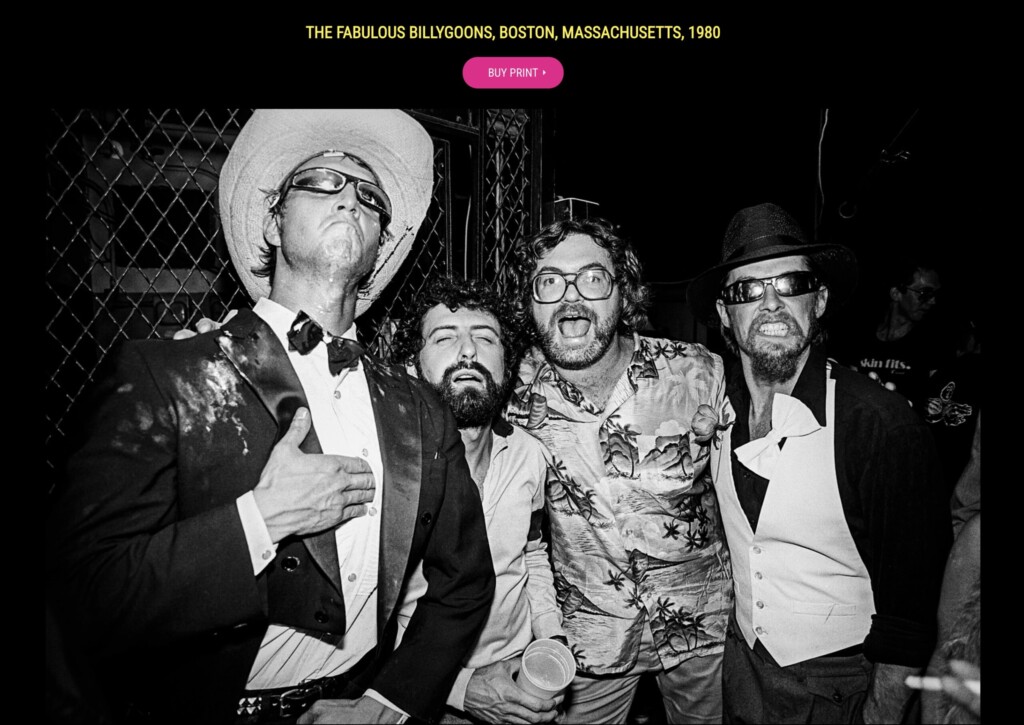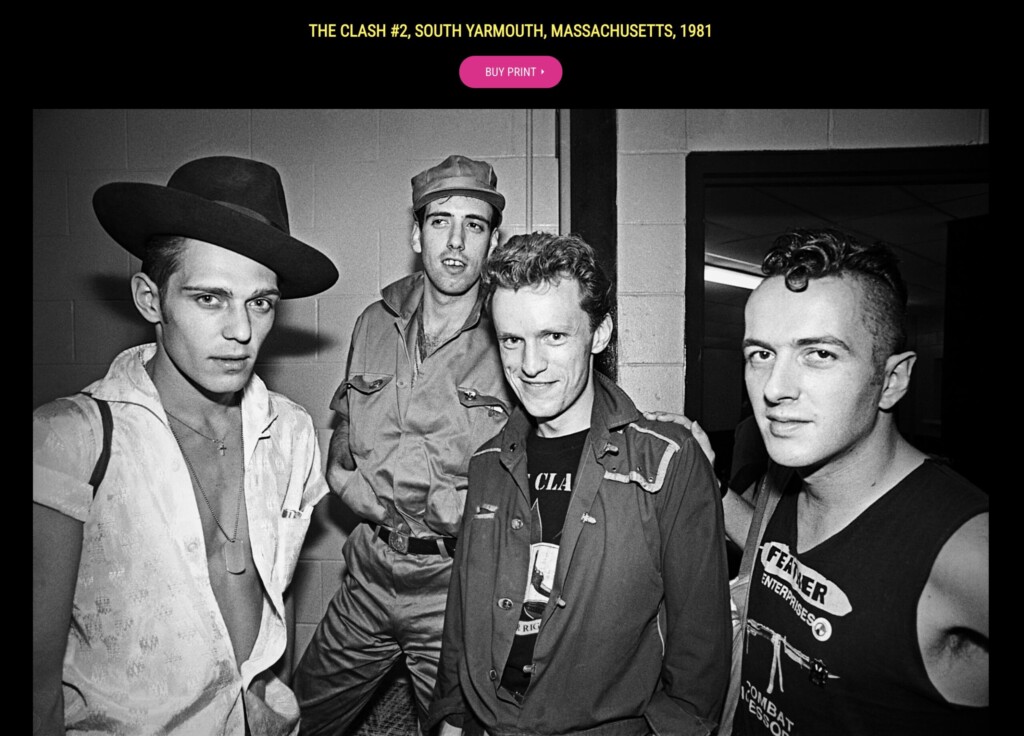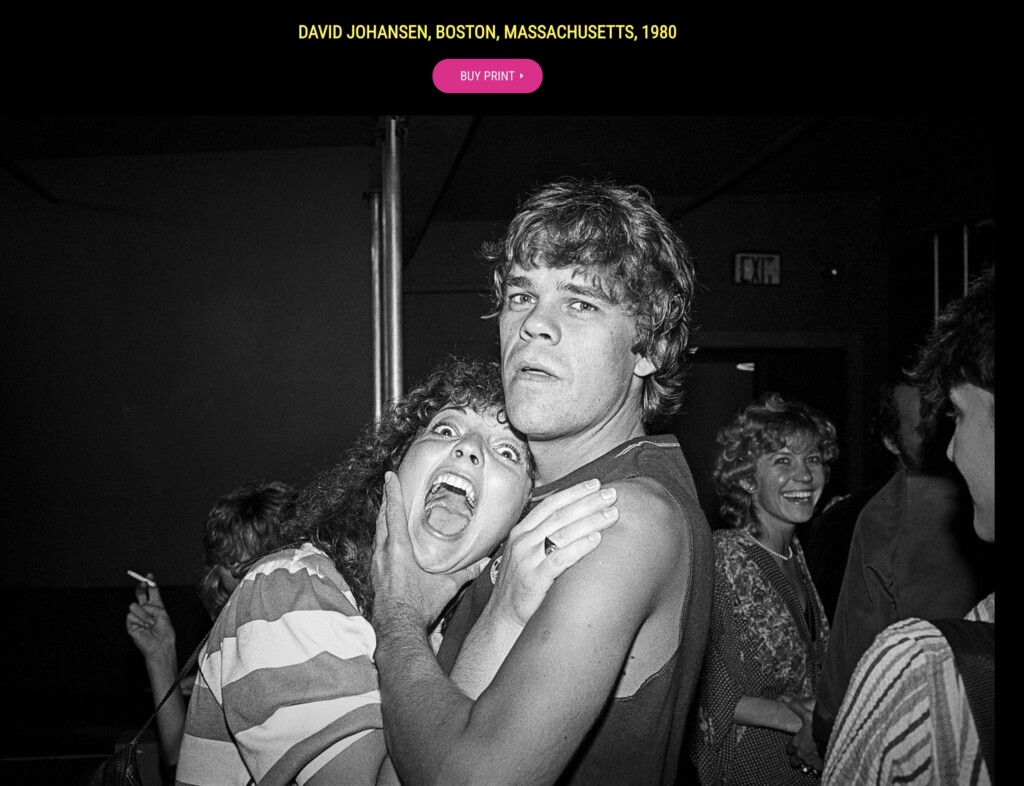Punk Rock Feuds and Friendships: Dynamics Between Bands
Punk rock had an attitude, it was music, art, culture, and revolution, which waved a flag of revolt against everything. The dynamics between bands created punk rock feuds and friendships. It was a rebellion that screamed out of disaffected minds and souls with a desire, need, and want to challenge THE status quo. The colors of the hippie culture, psychedelic rock were transformed into homogenized styles sold at every mall in the world while playing toned-down rock.
Punk wanted to rip it all up and start from nothing. In the garages and basements, a do-it-yourself ethos was born. In the process, bonds among rival bands were formed and broken. They were at once allies who understood and could share the rage against the corporate machine, retail chains, corporate rock, and adversaries in their quest to be THE unique sound, voice, and rage of the new culture, punk.
The relationships between bands can be seen in the photographs of Michael Grecco. He was granted unparalleled access to the growth of punk by the creators while steeped in his own photographic DIY journey and challenging the era of Kodachrome.
Black and White is the Color of Punk
Photographers during the emergence of the punk era were all about “perfecting” the living colors of life. It was sold by every camera manufacturer and filmmaker as the ultimate quest, it was the film of corporate rock. Michael Grecco was exploring the shadows and light of crisp, clean black and white photography that didn’t blur life and put it behind rose-colored imaginations. The early black and white photographs Michael Grecco shot of the emerging punk culture captured the attitude, rawness, and energy and became a favorite of the bands and fans of punk.
In the darkness of the day and the brightness of the night, the black and white photos of Michael Grecco revealed the moments of conflict, the unique comradeship of punk bands, and the culture.
Friendships Born of Competition, Rivalries of Power
Rivalries were inevitable in a culture that began in a DIY ethos with every idea and sound competing with all the others. It was natural that in the beginning, they would help each other produce and sell records, get gigs, and encourage fans to explore other bands. It was also natural that power created rivalries. The lenses of Michael Grecco captured the looks, sneers, smiles, and love-hate relationships firsthand.
The Sex Pistols and The Clash were “headliners” in the movement, each with a distinctive sound and vision. The Clash brought a politically charged diverse sound to the scene. The Sex Pistols epitomized chaotic nihilism. At the top of their game at the same time but playing on different boards, it created an intense rivalry.
Each was captured by the camera of Michael Grecco as they created iconic music in a quest to outdo each other. Photographs by Michael Grecco include the defiance in the eyes of Johnny Rotten as he spits out raw aggression.
Inside Out The Plague of Fame and Internal Conflict
Every Punk band had times of turbulence, The conflicts of The Clash and the Sex Pistols were more publicized because of their meteoric rise and conflict with each other. As different as they were, they were similar in dealing with internal conflict and dealing with it from the inside out.
In The Clash, Joe Strummer, the lead singer was headstrong to focus on political messaging, while Mick Jones, lead guitarist was in his heart and soul a musician who wanted to experiment with morphing musical styles into a new sound worthy of Punk. The DIY ethos was fizzling with fame, managers, production companies, and record label suits. Like the arena rock and disco ballroom sound that punk was challenging, commercialization was burning the band’s out. In The Clash, drummer Topper Headon who created the fundamental sound of The Clash hit, Rock the Casbah drifted away in addiction. Strummer and Jones, whose patience was being tried with each other, fame, management, and touring had little left to help Topper. One, two, three strikes came as quick as the rise to fame, and Headon was not so politely shown the way out. Casting out Topper was the icing on the proverbial cake, The Clash soon disintegrated and took its place as a punk icon that was no more.
The Sex Pistols internal conflicts mirrored that of The Clash, only the names were different. John Lydon aka Johnny Rotten was constantly battling manager Malcolm McLaren, who had a vision focused on the road to commercial success. McLaren sought to feature the persona of anarchy. Johnny Rotten felt exploited like a circus sideshow, not at all what he envisioned as a lead singer, performer, and song writer. The Sex Pistols also had to deal with an unreliable band member whose allegiance to heroin grew with their fame. Sid Vicious, the bassist who wasn’t much of a musician but had the right look, attitude, and persona that the early Sex Pistols were projecting, surrendered to the darkness of addiction.
On their ill-fated 1978 US tour, the internal conflicts came to a head and the Sex Pistols collapsed under the weight of financial problems, addiction, and conflicting directions among band members. In 2024, the Sex Pistol problems continue as John Lydon and the remaining band members battle out song ownership, royalties, and rights in court.
The Black and White Culture
In 1971, in the waning days of the anti-war movement, and the anti-poverty movement as the counterculture was transforming into the corporate culture, Gil Scott Heron released a song titled, The Revolution will Not be Televised. It was a foretelling of what was to come. In the clubs and urban decay Punk was being born, it was not televised on the evening news. It was captured by the realism of Black and White Photography by Michael Grecco. He captured the facial expressions and body language of the bands and their members in living black and white, capturing the friendships, rivalries, and reconciliation of hundreds of musicians and fans creating not just art but life.
Punk Rock Feuds and Friendships: Dynamics Between Bands
Punk rock had an attitude, it was music, art, culture, and revolution, which waved a flag of revolt against everything. The dynamics between bands created punk rock feuds and friendships. It was a rebellion that screamed out of disaffected minds and souls with a desire, need, and want to challenge THE status quo. The colors of the hippie culture, psychedelic rock were transformed into homogenized styles sold at every mall in the world while playing toned-down rock.
Punk wanted to rip it all up and start from nothing. In the garages and basements, a do-it-yourself ethos was born. In the process, bonds among rival bands were formed and broken. They were at once allies who understood and could share the rage against the corporate machine, retail chains, corporate rock, and adversaries in their quest to be THE unique sound, voice, and rage of the new culture, punk.
The relationships between bands can be seen in the photographs of Michael Grecco. He was granted unparalleled access to the growth of punk by the creators while steeped in his own photographic DIY journey and challenging the era of Kodachrome.
Black and White is the Color of Punk
Photographers during the emergence of the punk era were all about “perfecting” the living colors of life. It was sold by every camera manufacturer and filmmaker as the ultimate quest, it was the film of corporate rock. Michael Grecco was exploring the shadows and light of crisp, clean black and white photography that didn’t blur life and put it behind rose-colored imaginations. The early black and white photographs Michael Grecco shot of the emerging punk culture captured the attitude, rawness, and energy and became a favorite of the bands and fans of punk.
In the darkness of the day and the brightness of the night, the black and white photos of Michael Grecco revealed the moments of conflict, the unique comradeship of punk bands, and the culture.
Friendships Born of Competition, Rivalries of Power
Rivalries were inevitable in a culture that began in a DIY ethos with every idea and sound competing with all the others. It was natural that in the beginning, they would help each other produce and sell records, get gigs, and encourage fans to explore other bands. It was also natural that power created rivalries. The lenses of Michael Grecco captured the looks, sneers, smiles, and love-hate relationships firsthand.
The Sex Pistols and The Clash were “headliners” in the movement, each with a distinctive sound and vision. The Clash brought a politically charged diverse sound to the scene. The Sex Pistols epitomized chaotic nihilism. At the top of their game at the same time but playing on different boards, it created an intense rivalry.
Each was captured by the camera of Michael Grecco as they created iconic music in a quest to outdo each other. Photographs by Michael Grecco include the defiance in the eyes of Johnny Rotten as he spits out raw aggression.
Inside Out The Plague of Fame and Internal Conflict
Every Punk band had times of turbulence, The conflicts of The Clash and the Sex Pistols were more publicized because of their meteoric rise and conflict with each other. As different as they were, they were similar in dealing with internal conflict and dealing with it from the inside out.
In The Clash, Joe Strummer, the lead singer was headstrong to focus on political messaging, while Mick Jones, lead guitarist was in his heart and soul a musician who wanted to experiment with morphing musical styles into a new sound worthy of Punk. The DIY ethos was fizzling with fame, managers, production companies, and record label suits. Like the arena rock and disco ballroom sound that punk was challenging, commercialization was burning the band’s out. In The Clash, drummer Topper Headon who created the fundamental sound of The Clash hit, Rock the Casbah drifted away in addiction. Strummer and Jones, whose patience was being tried with each other, fame, management, and touring had little left to help Topper. One, two, three strikes came as quick as the rise to fame, and Headon was not so politely shown the way out. Casting out Topper was the icing on the proverbial cake, The Clash soon disintegrated and took its place as a punk icon that was no more.
The Sex Pistols internal conflicts mirrored that of The Clash, only the names were different. John Lydon aka Johnny Rotten was constantly battling manager Malcolm McLaren, who had a vision focused on the road to commercial success. McLaren sought to feature the persona of anarchy. Johnny Rotten felt exploited like a circus sideshow, not at all what he envisioned as a lead singer, performer, and song writer. The Sex Pistols also had to deal with an unreliable band member whose allegiance to heroin grew with their fame. Sid Vicious, the bassist who wasn’t much of a musician but had the right look, attitude, and persona that the early Sex Pistols were projecting, surrendered to the darkness of addiction.
On their ill-fated 1978 US tour, the internal conflicts came to a head and the Sex Pistols collapsed under the weight of financial problems, addiction, and conflicting directions among band members. In 2024, the Sex Pistol problems continue as John Lydon and the remaining band members battle out song ownership, royalties, and rights in court.
The Black and White Culture
In 1971, in the waning days of the anti-war movement, and the anti-poverty movement as the counterculture was transforming into the corporate culture, Gil Scott Heron released a song titled, The Revolution will Not be Televised. It was a foretelling of what was to come. In the clubs and urban decay Punk was being born, it was not televised on the evening news. It was captured by the realism of Black and White Photography by Michael Grecco. He captured the facial expressions and body language of the bands and their members in living black and white, capturing the friendships, rivalries, and reconciliation of hundreds of musicians and fans creating not just art but life.



